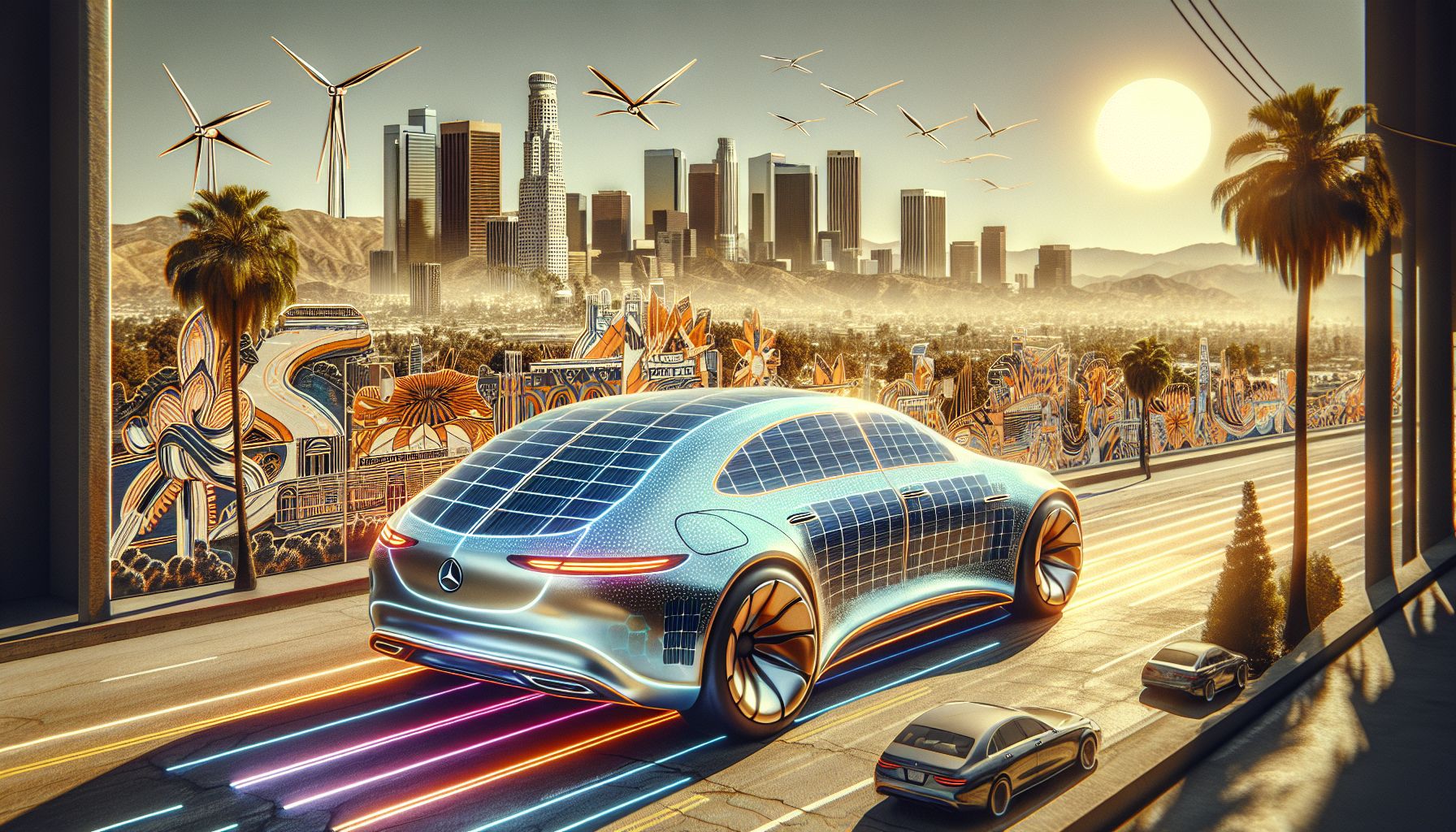Mercedes-Benz Revolutionizes EV Charging with Solar Paint Technology

Stuttgart, Tuesday, 26 November 2024.
In a groundbreaking development, Mercedes-Benz unveils photovoltaic paint technology that could power electric vehicles for up to 12,000 kilometers annually. This ultra-thin solar coating, just 5 micrometers thick, achieves 20% energy efficiency and requires no rare earth materials, potentially transforming how EVs are charged. In sunny locations like Los Angeles, the technology could eliminate the need for external charging entirely, while even in less sunny regions like Stuttgart, it could power 62% of daily driving needs. This innovation represents a significant step toward sustainable automotive solutions, combining practical charging capabilities with environmental responsibility.
The Mechanics of Solar Paint
Mercedes-Benz’s new solar paint technology incorporates photovoltaic cells into a vehicle’s surface, allowing it to generate energy from sunlight without traditional solar panels on the roof. The cells are just 5 micrometers thick, comparable to a wafer-thin layer of paste, and weigh 50 grams per square meter. This innovative design allows the paint to cover a medium-sized SUV with an area of 11 square meters, producing enough energy for approximately 7,456 miles (12,000 kilometers) of driving annually under ideal conditions[1][5].
Efficiency and Environmental Impact
The solar paint achieves an impressive energy conversion efficiency of 20%, making it competitive with traditional solar panels. Notably, Mercedes-Benz has designed this technology to exclude rare earths or silicon, opting instead for non-toxic, readily available raw materials. This choice not only reduces production costs but also simplifies recycling processes, supporting the company’s commitment to sustainable practices[4][6].
Geographical Influence on Energy Production
Geographical location plays a crucial role in the effectiveness of the solar paint. In Los Angeles, with its abundant sunshine, the paint could power 100% of average driving needs, potentially eliminating the need for external charging. Conversely, in Stuttgart, Germany, where sunlight is less prevalent, the paint could still supply energy for 62% of the average daily journey. These variations highlight the importance of environmental factors in maximizing the benefits of this technology[5][7].
Future Implications and Innovations
Mercedes-Benz is not only focusing on solar paint but is also exploring other innovations to enhance EV sustainability. These include integrating augmented reality (AR) glasses for safer driving and developing new braking systems to reduce particulate emissions. Additionally, the company is investigating biotechnologically enhanced materials to further minimize environmental impact. These efforts underscore Mercedes-Benz’s broader strategy to transition toward an all-electric vehicle lineup by 2030, aligning with global sustainability goals[2][3].
Conclusion: A New Era in Electric Mobility
With the unveiling of solar paint technology, Mercedes-Benz is setting a new standard in the automotive industry, merging cutting-edge engineering with ecological responsibility. This innovation not only promises to extend the range of electric vehicles but also marks a pivotal shift toward reducing dependency on external charging infrastructure. As the company continues to refine and expand its sustainable technologies, the automotive world stands on the brink of a transformative era[6][7].

